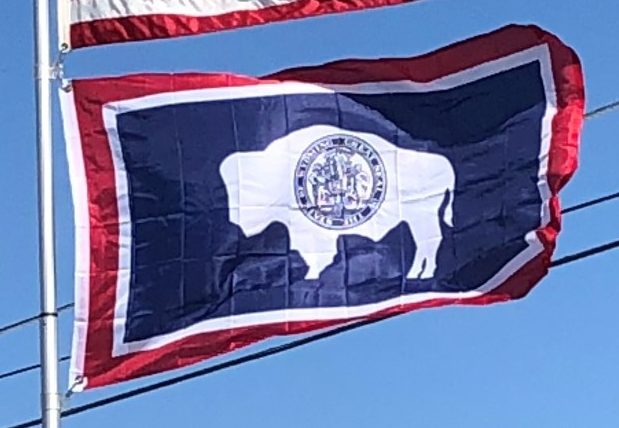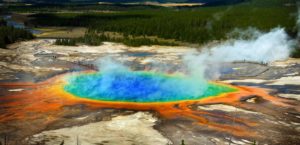
After the Union Pacific Railroad had reached the town of Cheyenne in 1867, the region’s population began to grow steadily, and the federal government established the Wyoming Territory on July 25, 1868. Unlike mineral-rich Colorado, Wyoming lacked significant deposits of gold and silver, as well as Colorado’s subsequent population boom. However, South Pass City did experience a short-lived boom after the Carissa Mine began producing gold in 1867. Furthermore, copper was mined in some areas between the Sierra Madre Mountains and the Snowy Range near Grand Encampment.
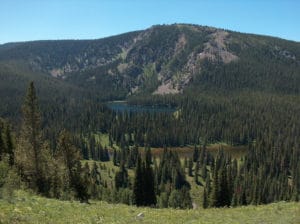
Once government-sponsored expeditions to the Yellowstone country began, reports by Colter and Bridger, previously believed to be apocryphal, were found to be true. This led to the creation of Yellowstone National Park, which became the world’s first national park in 1872. Nearly all of Yellowstone National Park lies within the far northwestern borders of Wyoming.
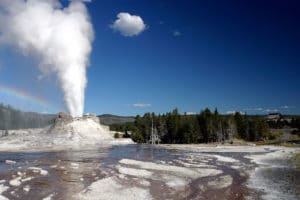
On December 10, 1869, territorial Governor John Allen Campbell extended the right to vote to women, making Wyoming the first territory and then United States state to grant suffrage to women. In addition, Wyoming was also a pioneer in welcoming women into politics.
Wyoming’s constitution included women’s suffrage and a pioneering article on water rights. Congress admitted Wyoming into the Union as the 44th state on July 10, 1890.
Wyoming was the location of the Johnson County War of 1892, which erupted between competing groups of cattle ranchers. The passage of the federal Homestead Act led to an influx of small ranchers. A range war broke out when either or both of the groups chose violent conflict over commercial competition in the use of the public land.
Economy:
The composition of Wyoming’s economy differs significantly from that of other states with most activity in tourism, agriculture, and energy extraction, and little in anything else.
The mineral extraction industry and travel and tourism sector are the main drivers behind Wyoming’s economy. The federal government owns about 50% of its landmass, while 6% is controlled by the state. Total taxable values of mining production in Wyoming for 2001 was over $6.7 billion. The tourism industry accounts for over $2 billion in revenue for the state.
In 2002, more than six million people visited Wyoming’s national parks and monuments. The key tourist attractions in Wyoming include Grand Teton National Park, Yellowstone National Park, Devils Tower National Monument, Independence Rock and Fossil Butte National Monument. Each year Yellowstone National Park, the world’s first national park, receives three million visitors.
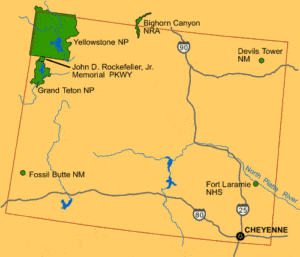
Historically, agriculture has been an important component of Wyoming’s economy. Its overall importance to the performance of Wyoming’s economy has waned. However, agriculture is still an essential part of Wyoming’s culture and lifestyle. The main agricultural commodities produced in Wyoming include livestock (beef), hay, sugar beets, grain (wheat and barley), and wool. More than 91% of land in Wyoming is classified as rural.
